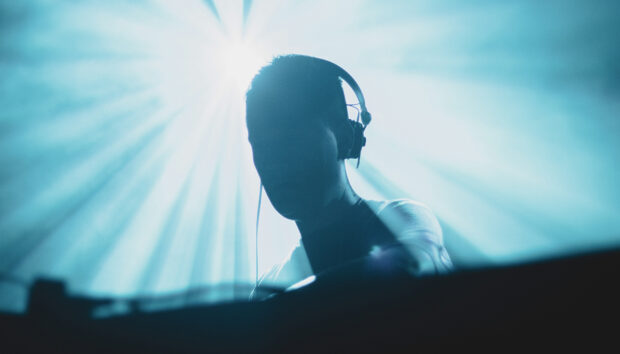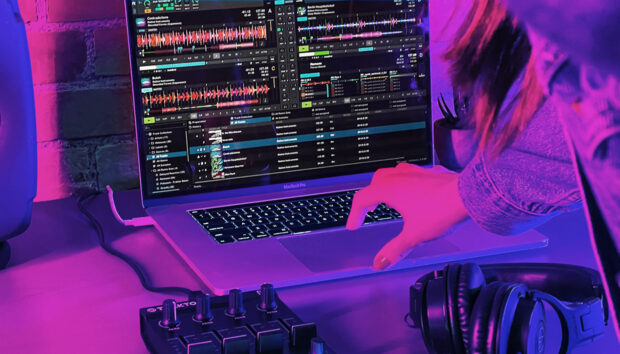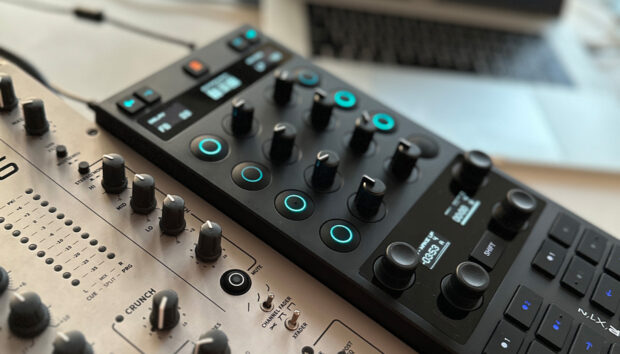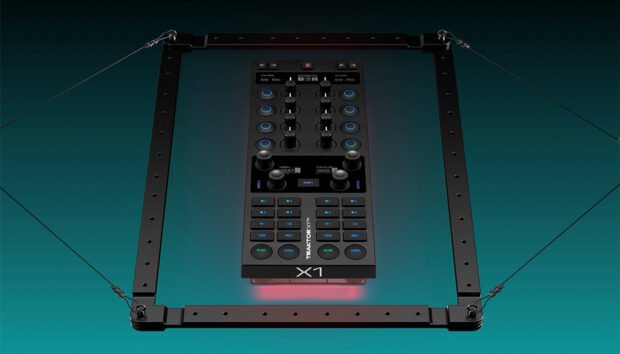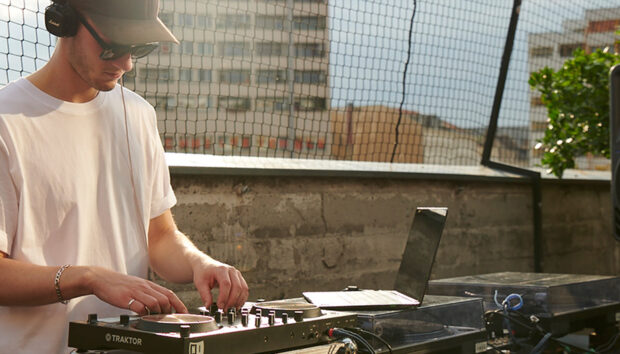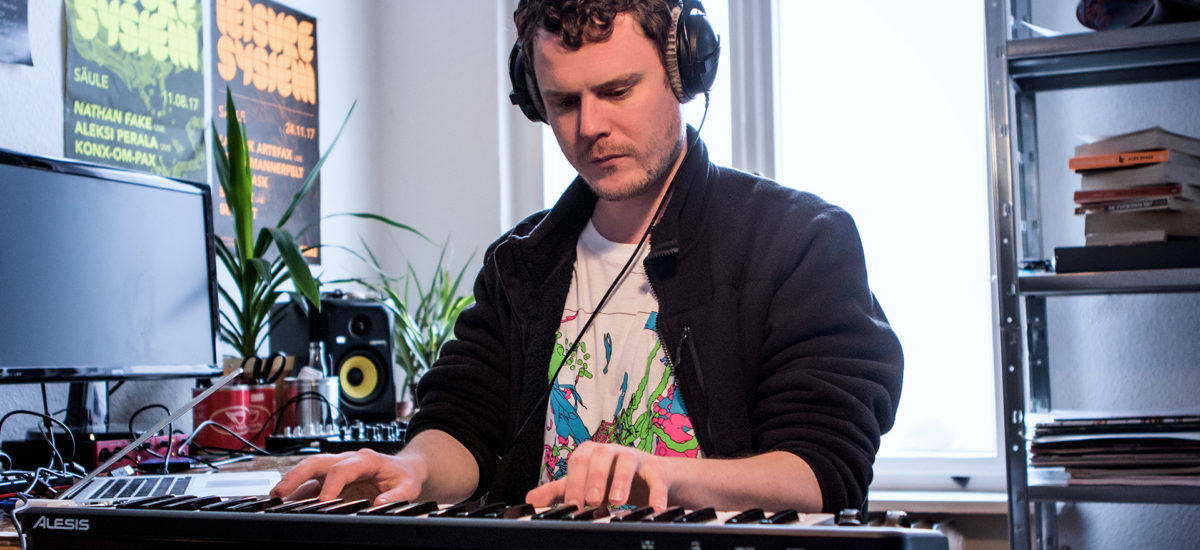
Tom Scholefield, a.k.a. Konx-om-Pax, has proven himself to be an artist adept at expressing himself equally in both audio and visual terms. Since graduating from the Glasgow School of Art, he has maintained a steady output across both fields. 2016’s Caramel incorporated influences from ’80s sci-fi through to ’90s rave, a textural sound complemented by the meticulous, lucid aesthetic of his visuals. Last year’s Refresher EP saw him move towards a more structured sound, while maintaining the depth and complexity he has become known for.
Speaking from his Berlin studio, Scholefield talks us through how TRAKTOR has become integral not just to his DJ sets, but also as a key step in his productions.
How old were you when you first became involved in music?
I must have been about 16 when I first DJ’d at a friend’s party using really old basic CD players. That was my first opportunity to play music, and then a bit later I got some belt drive decks and got into it properly that way. I’ve been using Traktor for I don’t know how many years, forever really.
How did you discover TRAKTOR?
I know that it was the software lots of friends used. I think I just found it easier coming from a production point of view that Traktor was just really simple to use and really effective.
So did you start producing before you were DJing?
My first synth was a Yamaha DJX and I used to make techno stuff and record it to cassette in my parents living room, just straight into the hifi, I must have been around 15 or 16 years old.
What kept you using TRAKTOR instead of CDJs or another software option?
I’m just so used to working on a laptop. CDJs are great fun but when you’re in the club you’ve still got this tiny screen to look at, and I just find finding things gets a bit tricky sometimes, and seeing how you’ve just got a laptop screen you can just find stuff a lot quicker and just have everything going on. It’s really self contained and easy to manage, CDJs are just a bit of a faff at times. I’m just so used to Traktor, like I can mix without even using headphones: I’m just so used to seeing it, mixing visually with the waveforms.
You have been playing a lot of back-to-back sets recently, do you stick with TRAKTOR in that situation?
Yeah, I mean at the next Leisure System I’m playing with Ned [Beckett] and he’ll probably use CDJs and records, and I’ll use my laptop with the Z1 just like a third deck. Because you have BPM on everything it’s dead easy to mix between everything without too much fuss.
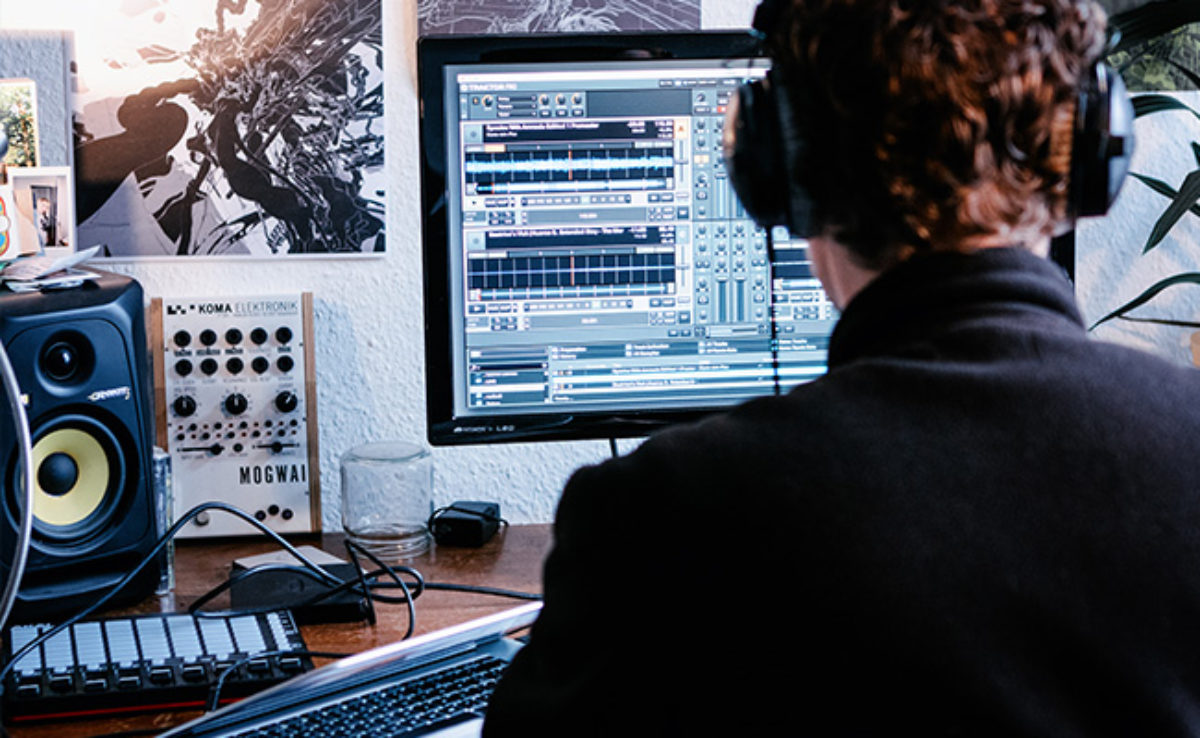
How do you find DJing in Berlin compared to the UK, where the nights are much shorter?
More of a marathon rather than a race to 3 a.m. I played the last set at Leisure System back in August, and it was a good three or four hours.
Does the extra time give you an opportunity to explore tracks further?
I definitely plan my sets more when I’m playing for that long, because if you’re DJing for an hour you don’t really need to think about it: you know you’ve got 15 good tracks and you can play them and it’s fine. But when it’s three or four hours you have to pace it a bit more and think about peaks and troughs, and complete changes of genre, not just techno.
You’ve also done a lot of live visuals for other artists, but when you’re playing solo are you also mixing the visuals live?
I’ve started to work with a friend, Michael Tan, who would control the visuals for me. We did that at Boiler Room, because I’ve done it before where I’ve been doing everything myself: I’ve been using like CDJs to play the music, and then laptop to do the visuals. I did a show at the iMax a couple of years ago in Bristol, with Factory Floor, and it was such a stress. I had too many things to think about. I had like ten different inputs, the music and as well the visual stuff.
So that kind of becomes overload.
Yeah it’s much easier for me to do my AV shows with Traktor and someone else playing the visuals for me, so I can just focus on the music and it’s a lot more fun that way. But I’ve been learning how to code in Unity to bring my 3D work into a realtime environment. It means I can have a set of visuals that run automatically while I DJ, but react to the music. It’s a steep learning curve, but it looks mental.
You seem to have balanced the music with your visual work, do you ever wonder which is driving which?
The visual stuff wasn’t really planned, it just kinda happened when I graduated because it was a fun way to pay the rent, just designing sleeves and videos for people. But it was never really the number one interest, it was always music. I’m spending more time doing music these days, and it’s playing a bigger part.
You said in an interview that musicians can struggle to express themselves visually, and it seems in a way that you’re kind of the opposite of that. You’re music seems to fit very closely with the aesthetic.
I see music as objects, like individual parts. Music is just chunks, just sort of blobs. Like the bass line is this shape, texture and colour, the high ends are that kind of tone, the vocabulary is very interchangeable between visual design and music production. Software terms are the same, like blurring a sound or adding texture. It’s all really interchangeable for me.
You’ve worked with a broad range of artists, from Hudson Mohawke to Mogwai, how much of an influence does this diversity have on your own work?
A big one really. It’s like a lot of the people I work for visually, their music rubs off on me. So all my friends that I work with, they’re greatly influential on the music I make. I borrow bits and bobs quite easily, an interesting blend of stoner metal and happy hardcore. I’d say Matt [Lone], Hudmo, Chris Clark and Mogwai probably have had the biggest impact. I love how cinematic and dynamic their stuff is.
As well as a tool for DJing, you have integrated TRAKTOR into your production workflow. How did that come about?
I always struggled to find the BPMs and getting things in time in my DAW for some reason. I couldn’t really get my head around it. I knew exactly what BPM things were in Traktor, and I just found it much easier to get things really tight. It’s just a really quick way of seeing how elements blend together without having to sequence anything. I just treat it like I’m sticking a record on, like I’m mixing a bunch of different elements together and getting it in time really quickly and just playing about with pitch. It’s a lot easier just to chuck things on that way than having to open up a DAW and sequence anything and wait for playback. It’s just really instant. It’s more like a sketch book to get ideas.
There’s a lot of depth to your sound, a lot of layers that are working together. You must want to know what’s working together.
I’ll use four decks in Traktor when I’m making things, and just swapping out things and seeing what works the best, quickly. For me it’s just being able to do stuff quickly that’s important, and not investing too much time to discover that it doesn’t work.
Like you say, you can lose a lot of time just trying to sync things up.
Yeah, for me it’s just about how things blend together, and that’s why Traktor’s handy: just to get an instant understanding of stuff.
Also on a lot of Caramel, the percussive elements aren’t necessarily the focus of the track.
No, I mean it’s only the recent stuff, like my last EP Refresher was more dance oriented, and I found Traktor just really handy to quickly check what a breakbeat would sound over something without going in and spending too much time to discover that it wasn’t good. I’ve been getting slowly better at balancing drum sounds with the melodic parts of the track. I’ve been struggling with that since I was a teenager but getting there now.
Have you found that the way you use TRAKTOR in your production has influenced how you use it when you DJ?
I loop things a lot when I’m mixing. Like it’s really good just to loop the initial segment of a track, and mix that loop in. It just means you’ve got more control of when you can release it and mixing other breakbeats over things, and drastically changing the pitch of tracks is quite funny. Like playing old Universal Indicator tracks at minus 25 to turn them into house tunes, just extreme changes that you can’t do with a set of turntables, that’s always quite good fun.
Once you started playing with the pitch so drastically it really changes things.
Yeah, it opens it up a lot. That’s another good thing, extreme pitching is quite good fun in Traktor, playing something at minus 50 and then adding reverb to that, and it just turns it into a drone piece. I play with pitch a lot, I think that’s why I like Traktor the most, it’s just really easy to pitch things to the way you want.
photo credits: Yvonne Hartmann








